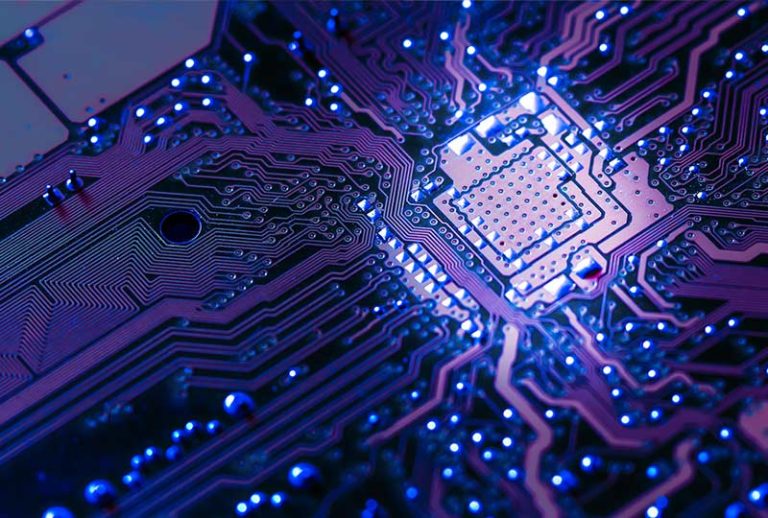Revolutionizing Cancer Treatment: The Impact of AI Technologies in Combatting the Disease
The rapid evolution of technology—from the advent of smartphones to the emergence of digital assistants such as Siri and Alexa—has sparked a fervent conversation in recent years. While many facets of our lives are intertwined with technology, some of the most groundbreaking advancements remain hidden from the everyday experiences of many.
Looking back, receiving a cancer diagnosis was a far grimmer prospect approximately 50 years ago compared to today’s reality. For instance, the 5-year survival rate for childhood leukemia was a mere 14 percent from 1960 to 1963, but has astonishingly increased to 61.4 percent today. The landscape of cancer care has transformed significantly, with more advancements occurring in the 21st century than in all previous decades combined.
In the realm of healthcare, particularly in cancer treatment, innovative technologies are being harnessed in remarkable new ways. Numerous studies have been initiated to explore the potential of artificial intelligence (AI) in our battle against cancer, with the ultimate aim of eradicating this disease altogether.
Although there has been notable progress and overall outcomes appear promising, cancer rates remain on the rise. A recent report estimates that in 2018 alone, there were about 18.1 million new cancer cases and 9.6 million cancer-related deaths—a significant increase from 14.1 million cases and 8.2 million deaths recorded in 2012. This surge puts immense pressure on oncologists and researchers to stay ahead, yet AI holds the potential to provide effective solutions to help alleviate this burden.
In particular, there’s an increasing prevalence of occupational cancers stemming from the changing work conditions throughout the 20th century. Individuals employed in factories, shipyards, or near structures containing asbestos are especially susceptible to developing rare and often lethal cancers, like mesothelioma.
Mesothelioma, which arises in the mesothelium lining the lungs, heart, or abdomen due to asbestos exposure, is notorious for its high misdiagnosis rate. Its symptoms closely resemble those of common ailments like asthma, pneumonia, and Irritable Bowel Syndrome (IBS), often resulting in patients remaining undiagnosed for years, if not decades. The incidence of mesothelioma has sharply increased due to its long latency period, affecting many who encountered the hazardous material at work during the late 1900s.
As we forge ahead in the 21st century, artificial intelligence could play a pivotal role for mesothelioma patients given the cancer’s particularly dire prognosis. The average life expectancy for a mesothelioma patient is less than two years, making early detection and diagnosis crucial. Encouragingly, research involving malignant mesothelioma and AI is already underway, despite the cancer’s rarity.
In 2015, a groundbreaking study in Turkey successfully utilized machine learning—a branch of AI focused on enabling machines to learn autonomously—to diagnose mesothelioma with an impressive accuracy rate of 96.3% through the implementation of two probabilistic neural network (PNN) structures. As further studies continue to unfold, it will be fascinating to observe the evolution of treatments concerning mesothelioma and other occupational cancers, all thanks to cutting-edge technology.
Artificial intelligence isn’t the only transformative technology enhancing the prognosis for cancer patients. Electronic health records (EHR), telemedicine, and digital assistants are forging new pathways for treatment, while researchers are refining traditional therapies, such as radiology, to better meet patient needs.
While the future of cancer treatment remains uncertain, optimism is more vibrant than ever. With cancer care becoming increasingly specialized and ongoing research paving the way for new innovations, the next 50 years hold immense possibilities for advancements in this field.
of smartphones to digital assistants like Siri or Alexa, breakthrough technologies have emerged as a compelling topic in recent years. While technology integrates itself into various facets of our lives, some of the most remarkable innovations remain unnoticed by many in our everyday routines.
To put things into perspective, a cancer diagnosis carried a much graver outlook nearly 50 years ago compared to today. For instance, the 5-year survival rate for childhood leukemia was a mere 14 percent from 1960 to 1963, but it has since skyrocketed to 61.4 percent. The landscape of cancer care has witnessed significant advancements, with more breakthroughs occurring in the 21st century than in any previous era.
In the healthcare domain—particularly in cancer treatment—technology is being harnessed in groundbreaking ways. Numerous studies have explored the potential of artificial intelligence (AI) in enhancing cancer care with the ultimate goal of eradicating this disease completely.
Despite the improvements and overall better outcomes, cancer rates continue to climb. A staggering 18.1 million new cancer cases and 9.6 million cancer-related deaths were recorded in 2018, according to a recent report. This marks a dramatic increase from the 14.1 million cases and 8.2 million deaths reported in 2012. The rising numbers add immense pressure on oncologists and researchers, making the integration of AI a promising solution to help alleviate this burden.
In particular, the rise in occupational cancers correlates with the changing working conditions throughout the 20th century. Individuals employed in factories, shipyards, or near structures containing asbestos are at heightened risk for developing rarer cancers, including the often-lethal mesothelioma.
Mesothelioma, a cancer that forms in the mesothelium lining the lungs, heart, or abdomen due to asbestos exposure, frequently suffers from misdiagnosis. Symptoms tend to mimic those of common illnesses such as asthma, pneumonia, and Irritable Bowel Syndrome (IBS), delaying diagnosis for many patients by decades. The incidence of mesothelioma has escalated in recent years due to its long latency period of 10-50 years, putting many former workers exposed to asbestos during the 1900s at risk as they age.
As we move further into the 21st century, AI could significantly alter the care landscape for mesothelioma patients given the especially bleak prognosis—average life expectancy for these patients is less than two years. Early diagnosis and detection could prove to be lifesaving. Encouragingly, several studies focusing on malignant mesothelioma and AI are already underway, despite the cancer’s rarity.
One notable study in Turkey in 2015 successfully employed machine learning—a branch of AI capable of executing tasks without pre-programming—to diagnose mesothelioma with an impressive 96.3 percent accuracy using two probabilistic neural network (PNN) structures. It will be fascinating to monitor future studies and advancements in mesothelioma and other occupational cancers propelled by modern technologies.
Moreover, artificial intelligence isn’t the sole technological advancement enhancing cancer care. Electronic Health Records (EHR), telemedicine, and digital assistants, among other innovations, are paving new paths for treatment options for both doctors and patients. Meanwhile, researchers are elevating traditional treatments, such as radiology, to unprecedented levels to better cater to patient needs.
While the future of cancer treatment may remain uncertain, the landscape is filled with unprecedented hope. Cancer care is more specialized than ever, with continuous research efforts dedicated to pushing the boundaries of innovation. The possibilities for advancements in the next 50 years are boundless.






